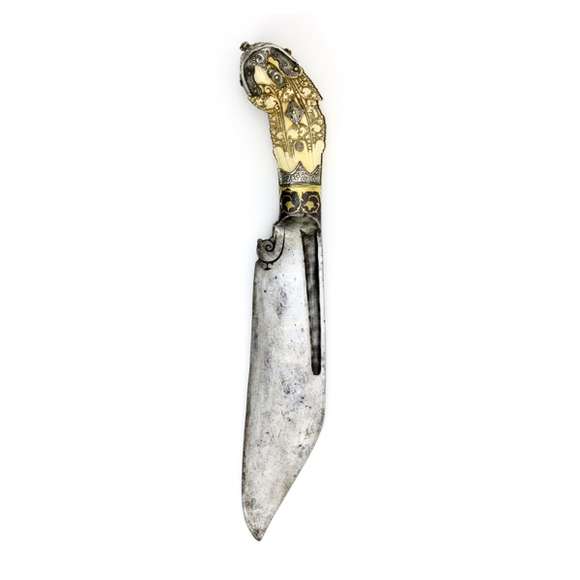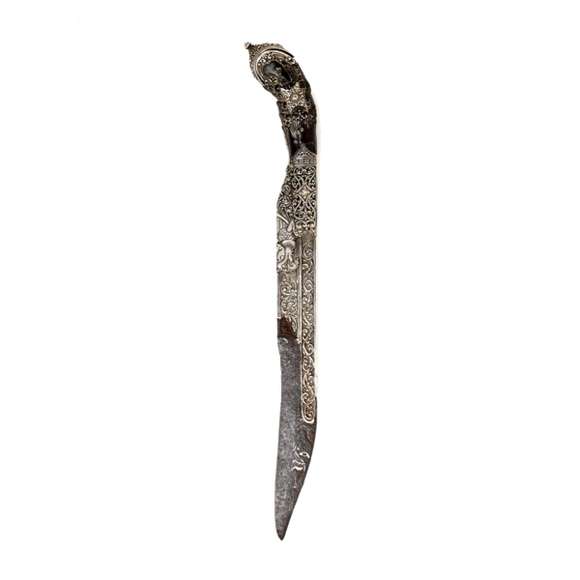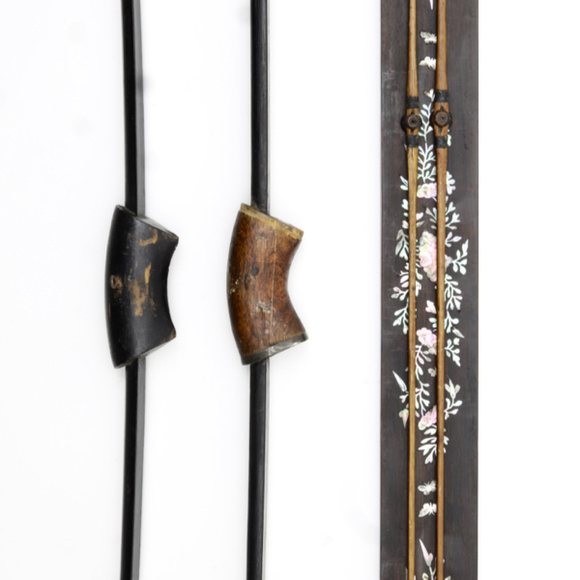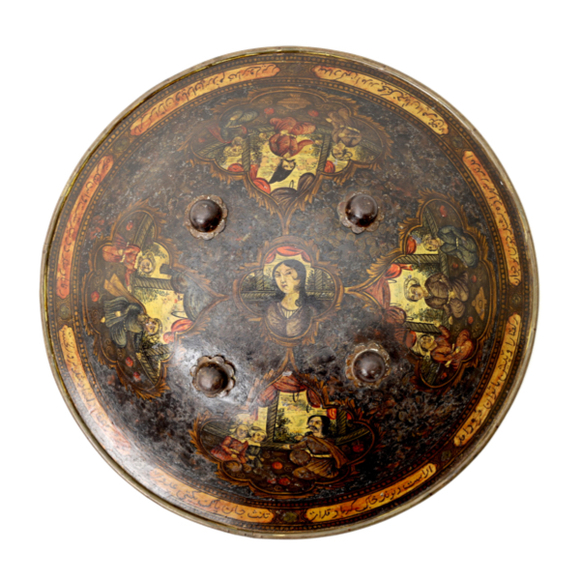Of the chopper variety, with a finely carved ivory hilt.

185 cm
Width 21.5 mm
Thickness 19 mm
Kingdom of Kandy, Sri Lanka
Wood, lacquer, pigments, horn
Circa 1750 - 1815
Introduction
Sinhalese lacquer workers were called ī-vaḍuvō, literally "arrow-makers" who were involved in both the turning of wooden objects and lacquering them.
At any time, two of them would be working in the armory of the king's "Four Workshops". They would produce mainly bows and polearm shafts.1
"... the better kinds are highly decorated, being covered with effective patterns in stick lac of various colours, chiefly red, yellow and black, and in early designs also green.
They have no notches; the string, Dunu-diya or Dunu-lanuwa, made of the inner bark of trees or the fibres of the Niyanda plant (Sansievera zeylanica), is merely tied permanently at one end and looped over the other when the bow is about to be used." 2
-H. Parker, 1909.
Notes to introduction
1. Ananda Coomaraswamy; Mediæval Sinhalese art, Broad Campden Essex House Press, 1908. Pages 215 - 217.
2. H. Parker; Ancient Ceylon. Luzac & Co, London, 1909. Pages 523 and 540.
Description
A fine Sinhalese lacquered longbow of round cross-section. Thick in the middle, it tapers gradually to each end. The bow is largely round in cross-section, with a mild flattening on the belly. There is a horn nock in English style on one side, and a tapering part on the other where there was probably another such nock.
It is covered entirely with a thick vermillion red (sādiliṅgham) base, the bow would be turned fast and the lacquer applied with a talipot leaf, the friction heating the lacquer and applying it.
Over the base, various traditional Sinhalese decorative elements are applied. The work is called Mātale work, also referred to as niyapoten vẹḍa or "finger-nail work". This refers to the fact that the lacquer is not applied with a brush. Instead, the hot lacquer of high viscosity is pulled in string using a stick, and the string is applied directly to the surface, its end cut off by the fingernail. The resulting work is very distinctive.1
Dating and attribution
The fine lacquer work on this bow looks to be the work of the ī-vaḍuvō in the Four Workshops that worked for the king of Kandy. Like the production of ornate knives and swords, this kind of craftsmanship suffered after the fall of Kandy and royal patronage was seized in 1815. As a result, we can probably date the bow to the second half of the 18th century, probably no later than 1815.
Condition
In a rather good condition throughout, with mainly some abrasion from the arrow on both sides. Some minor damage here and there.
Notes
1. For more information on this kind of lacquerwork and its decorative motifs, see my article: Sinhalese lacquer work.









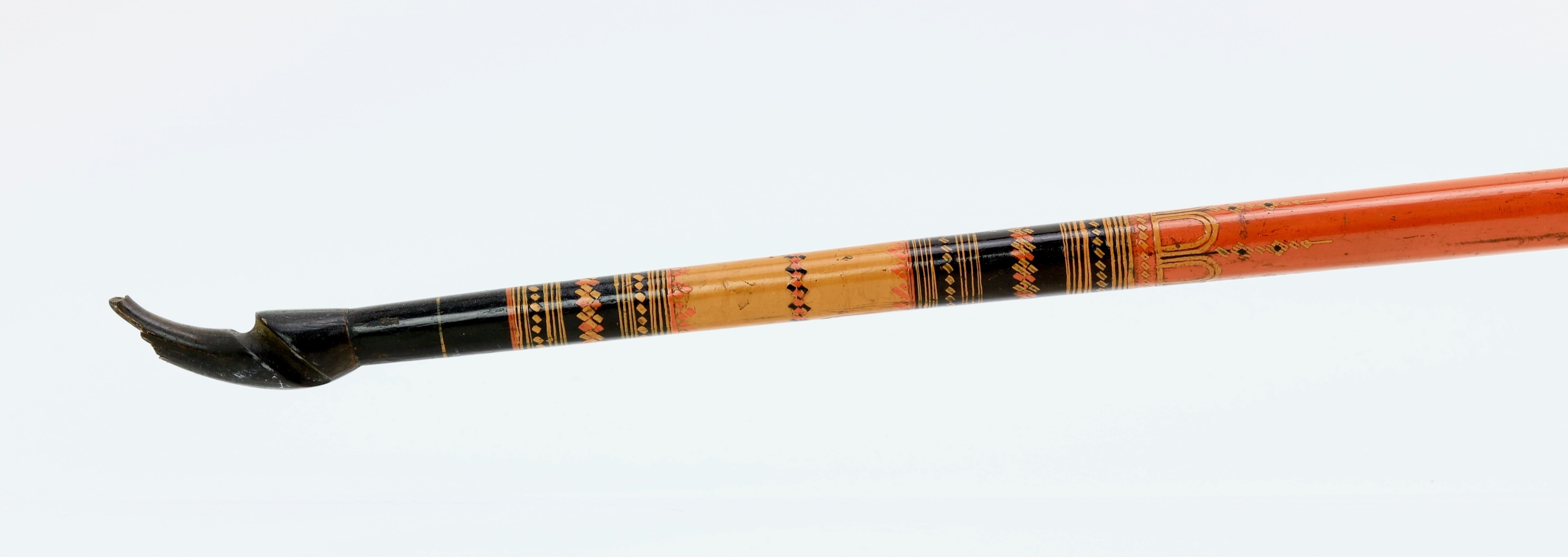






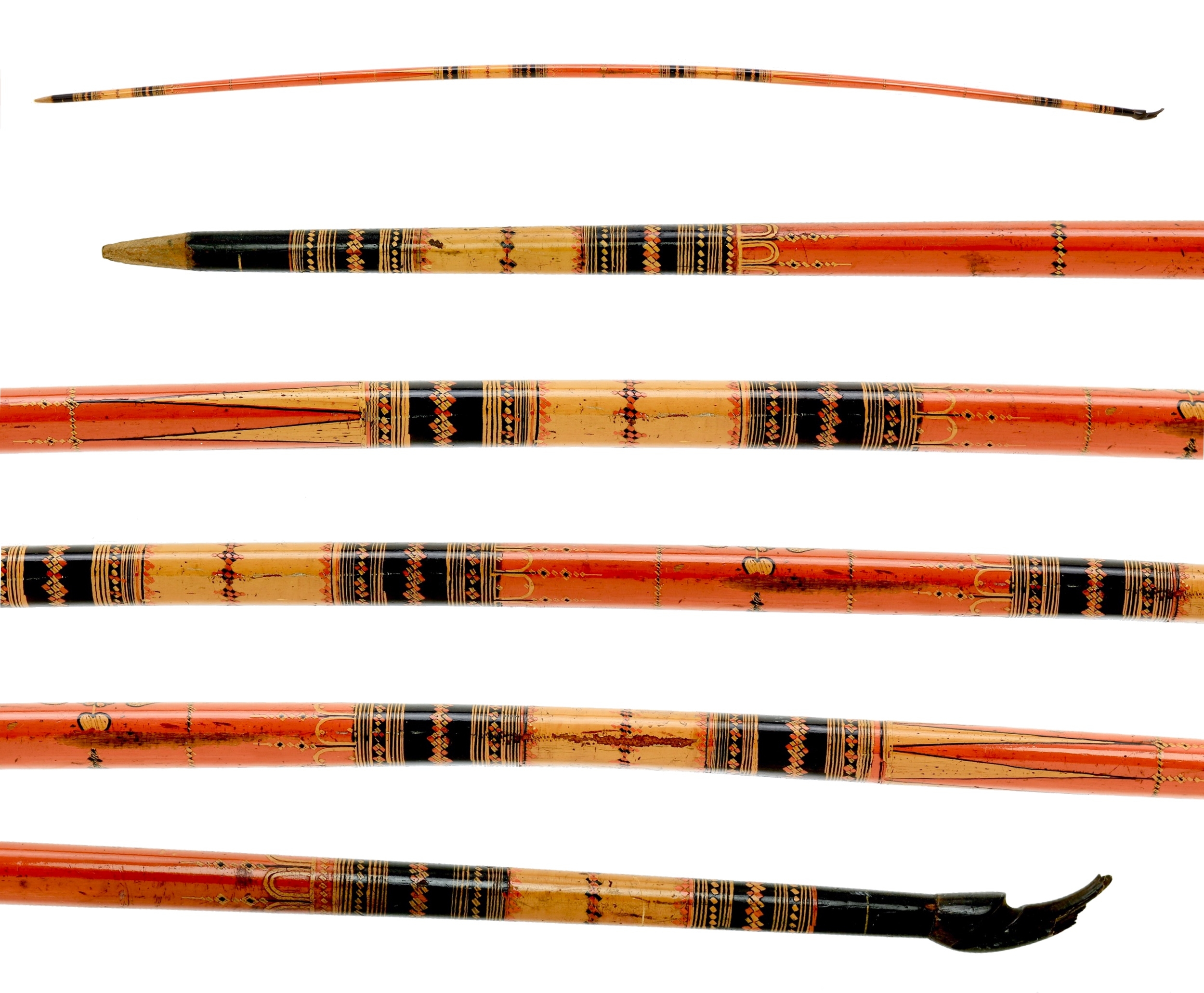
Of nice quality, with unusual openwork silver bolster with serapendiya.
An exceedingly rare set with fine mother of pearl inlaid string board

